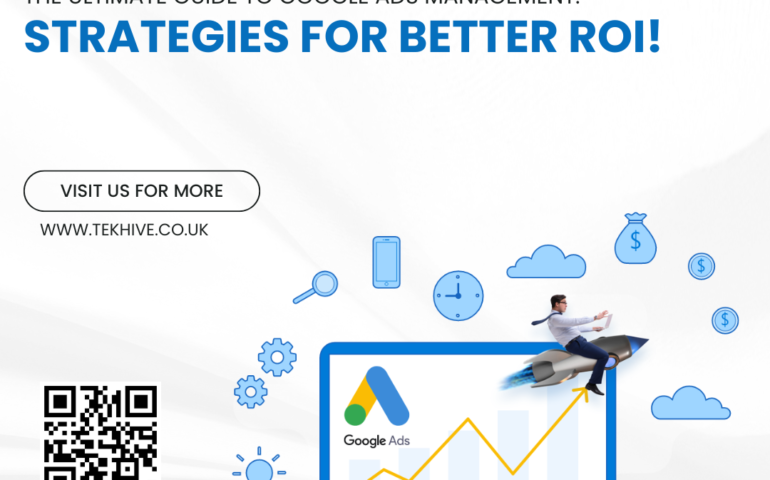
Google Ads Management

Google Ads management is more than just setting up a campaign; it’s about strategically planning, analyzing, and optimizing to achieve the best possible results. Whether you are a business owner looking to boost sales or a digital marketer aiming to enhance ad performance, mastering Google Ads management can make all the difference. In this comprehensive guide, we will explore everything you need to know about managing Google Ads efficiently to drive more traffic, increase leads, and improve ROI.
What is Google Ads Management?
To begin with, Google Ads management involves the process of creating, overseeing, and optimizing pay-per-click (PPC) campaigns on Google’s advertising platform. This can include activities such as keyword research, ad copywriting, audience targeting, budget allocation, and performance tracking. In other words, effective management ensures that your campaigns are cost-effective while achieving set marketing objectives.
Why is Google Ads Management Important?
Furthermore, managing Google Ads properly is crucial because it can significantly impact your advertising budget and overall marketing performance. For instance, a well-optimized campaign can deliver higher click-through rates (CTR), lower cost-per-click (CPC), and ultimately better conversion rates. On the contrary, poorly managed campaigns can lead to wasted ad spend, lower ROI, and missed opportunities.
Key Strategies for Effective Google Ads Management
1. Conduct Thorough Keyword Research
First and foremost, keyword research is the foundation of any successful Google Ads campaign. By identifying the right keywords that your target audience uses, you can ensure that your ads appear in relevant searches. Utilize tools like Google Keyword Planner, SEMrush, or Ahrefs to find high-volume, low-competition keywords. Moreover, continuously update your keyword list to keep up with changing trends and user behavior.
2. Optimize Ad Copy for Better Engagement
Next, creating compelling ad copy is critical to capturing your audience’s attention. Your ad headlines should be clear, benefit-focused, and aligned with user intent. Additionally, using emotional triggers, numbers, or special offers can make your ads more appealing. For instance, instead of using a generic headline like “Buy Shoes Online,” you could say, “Get 50% Off on Premium Running Shoes!”
3. Leverage Ad Extensions
Moreover, ad extensions can enhance your ad visibility and increase CTR. These extensions provide extra information, such as site links, call buttons, or location details. By using ad extensions strategically, you can encourage users to take action directly from the ad, whether it’s calling your business or visiting a specific landing page.
4. Set Up Proper Audience Targeting
When it comes to targeting, Google Ads allows you to segment your audience based on various factors like demographics, interests, and online behavior. Therefore, setting up precise audience targeting helps you reach users who are more likely to convert. Use audience insights to refine your targeting over time and ensure that your ads reach the right people at the right time.
5. Implement A/B Testing
Similarly, conducting A/B testing is vital for optimizing ad performance. By testing different versions of your ad elements—such as headlines, descriptions, or images—you can determine what resonates best with your audience. As a result, A/B testing helps you make data-driven decisions to enhance campaign performance.
6. Monitor and Adjust Bids Regularly
In addition, bid management is a core aspect of Google Ads management. By regularly adjusting bids based on performance data, you can improve ad rankings while maintaining cost-effectiveness. Consider using automated bid strategies provided by Google Ads, such as Target CPA or Maximize Conversions, for better results.
7. Analyze Campaign Performance
Furthermore, tracking and analyzing your campaign’s performance is essential to identify areas for improvement. Use Google Analytics and Google Ads reports to evaluate metrics such as CTR, conversion rates, and return on ad spend (ROAS). This data will help you understand what’s working and what needs adjustment.
8. Use Negative Keywords
Equally important is the use of negative keywords in your campaigns. By excluding irrelevant searches, you can ensure that your ads are shown only to users who are genuinely interested in your offerings. For instance, if you sell high-end products, adding “cheap” as a negative keyword will prevent your ads from appearing in searches related to budget options.
9. Create Dedicated Landing Pages
Effective Google Ads management doesn’t stop with the ad itself; it extends to the landing page as well. Ensure that your landing pages are relevant to the ad content and offer a seamless user experience. Additionally, use clear call-to-actions (CTAs), minimal forms, and optimized loading speeds to increase conversions.
10. Stay Updated with Google Ads Policies
Finally, staying compliant with Google Ads policies is crucial for running uninterrupted campaigns. Google frequently updates its advertising guidelines, so make sure to review the policies regularly to avoid ad disapprovals or account suspensions.
Best Practices for Managing Google Ads
- Use Data Analytics: Regularly analyze data to identify trends, make informed decisions, and adjust strategies.
- Budget Wisely: Set a realistic budget that aligns with your marketing goals, and allocate more funds to top-performing campaigns.
- Focus on Quality Score: Aim to improve your Quality Score, as it can reduce CPC and enhance ad positioning.
- Automate Where Possible: Use automation tools to streamline tasks like bid management, reporting, and ad creation.
- Keep Testing: Never stop testing and experimenting with different elements of your campaigns to maximize results.
Common Mistakes to Avoid in Google Ads Management
- Ignoring Ad Relevance: Ensure that your ads are always relevant to the keywords and user intent.
- Lack of Monitoring: Failing to monitor campaigns can lead to overspending and decreased performance.
- Neglecting Mobile Users: With a growing number of mobile users, always optimize your campaigns for mobile devices.

Final Thoughts about Google Ads Management
In summary, Google Ads management is an ongoing process that requires dedication, strategy, and constant optimization. By following the strategies and best practices outlined in this guide, you can maximize your ad performance, increase conversion rates, and achieve a higher ROI. Remember, successful management involves not only creating effective campaigns but also monitoring and adjusting them based on real-time data. Start implementing these tactics today to see improved results from your Google Ads campaigns.
If you want to read more information about how to boost your website traffic, just visit –> TekHive





